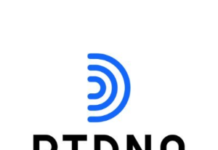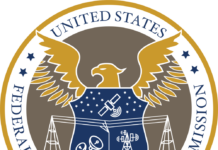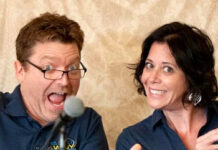
Earlier this year, One Putt Broadcasting in Fresno, California did what so many stations only dream of: they limited ads on each of their five stations to five minutes per hour. As radio chases the shorter stopset, Radio Ink talked with One Putt owner John Ostlund about the path there and the results.
Radio Ink: Everybody claims that they want shorter stop sets, but so few do it. Why do you think that is?
John Ostlund: One Putt is fortunate we just don’t have any debt. And so that’s the biggest competitive advantage that we could possibly have. Well, and I really believe in being different. And I really believe in radio. If you wanna have a great brand, there are two things you have to do before everything else. One is to make your listeners happy and the other is to make your advertisers happy.
So, I did the math – five minutes an hour, 18 hours a day, times five stations, times 365. When I sell out at five minutes, I’ll have doubled my revenues. And so I think that’s a better path to success for us to stick with that idea than, no offense intended, iHeart or Cumulus.
They’re very large, very successful organizations that found themselves between a rock and a hard place, but I think they maybe look at this industry as a commodity more than I do. Rather than sell radio as a commodity, we have a rate card. We don’t vary from it. We don’t give away spots. We don’t do bonus weight. We don’t let agencies tell us how we’re going to sell our products and our services. That’s my mindset.
Radio Ink: What was the average spot load on your stations before committing to the five minutes?
John Ostlund: Oh, just like everybody else, we were running 10 or 12 an hour – maybe more. And it was just a cluster. To sell it, you had to discount it, and then give it away on top of the discount. It was a race to the bottom. You know, I would have to compete with iHeart and Cumulus who were discounting the products. There’s no way that I can get in the ring with iHeart, because you know the minute that I sell something for – call it $10 – iHeart and Cumulus will take $8. So am I supposed to take $6? And they’ve got a lot more inventory than I do because there’s almost no limit to how many commercials they’ll run.
I did a funny thing when I decided to make this move. We recorded a single break on a competitor that had 12 units in a single break. I recorded it and went to a local agency and I played this break. At the end of that, I put a hundred-dollar bill on the table. I said, “If you all, working together, can name all the commercials you just heard, this is yours.”
I think they got six.
So then I looked at the agency president and I said, “What if you were the only commercial in a break? Would it be worth more?” She said absolutely. So they clearly saw that it was more valuable to be one of one rather than one of 12 that nobody hears, nobody remembers. So that’s when we really made the decision. We have two two-minute breaks, and one 60-second break at 50, where an advertiser can pay a small premium to own that break.
Radio Ink: So how have the local advertisers responded to this?
John Ostlund: It’s been remarkable. We made a presentation to a large resort on the edge of Fresno County and explained the logic behind the whole thing. And then we added a unique twist. That one-minute break would be live. So you’d have the DJ coming out of the song and saying, “Hey, that was Michael Jackson off of Thriller and talk about a thriller – have you been to Harris Ranch? Place’s unbelievable.” And so it’s a live improvisational 60-second commercial. We started that campaign a few months ago and the president of the company loved it so much when he heard it, that he sent it to his board, all of his employees, his friends.
Radio Ink: It’s funny because this is all how a lot of ads and programming were done back in the day. Is this a case of “everything old is new again?”
John Ostlund: Well, I am a huge fan of what Bill Drake and Gene Chenault did together. And I know that story fairly well. When I bought KYNO, I took possession of Gene Chenault’s personal file cabinet. It had just been sitting there for all these years. And I opened it up. And there’s all these memos. I love that sort of stuff.
Radio Ink: Besides live reads, let’s discuss recorded ad quality. We’ve all heard, and probably run, snoozers. What focus goes into ad development when you and the client both know it’ll stand out way more?
John Ostlund: You know, that’s a very important brick in the wall. You got to stack a million bricks together and it has to be an absolutely perfect line. If you don’t do that, you’ll never maximize your potential. Five minutes an hour is one brick. Absolutely stunning, creative, commercial production is another brick. Service to community is a brick.
Every single week, we invite the executive directors of five local nonprofit organizations into the radio station to record a PSA, which airs about 40 times over the course of seven or eight days. And then we’re on to the next group of five. Last year, we served 160 nonprofits with a staff of three people that were just assigned to that. And it’s another one of the bricks in the wall. There’s not a station in the market that does the kind of public service announcements that we do. There’s not a radio station that invests the kind of money that we do in producing creative.
Radio Ink: So the five minutes per hour is just one piece of the radio puzzle?
John Ostlund: We’re trying to maximize the potential of radio. What we don’t need is just more music. If all you were going to do is reduce your commercial load so you could play more songs, that would leave the listener feeling very abandoned. We engage the listener. We have to be the companion that radio always wants to be. It’s a lot of work, but I’m really lucky to have a staff of 12 full-time and another 12 part-time that I’d put up against anybody.
You couldn’t pick a better time to be in radio if you like to compete, if you like to win, because the large groups – and again I mean no disrespect – they’ve got billions of dollars invested but they’re handicapped by debt. Their only way out is to generate revenue and the only way to do that is to give it away. They can’t concentrate on what I concentrate on every day.







I’m familiar with John from a couple of mutual friends we share. From what I understand he has always been a innovator. Cheers to you Mr. Ostlund!
John is doing all the right things and should be celebrated and emulated. He is in the unique position of being debt free and able to sell the true value of radio and his stations. Very impressive!
Back in the ’60s I worked at 2 different stations, and we never ran two commercials back-to-back. We’d run a 1 minute commercial, play a record or two, then another commercial, etc. And we always separated competing companies by at least 15 minutes. The listeners were not overwhelmed and we still could run up to 10-15 spots an hour during prime seasons, like the holidays.
We are starting to see the same approach on streaming services. One or two commercials, a few times an hour bathe breaks, in comparison to the marathons heard on terrestrial radio, are so short they’re practically invisible.
If you remember the old Ckeaf Channel “Less is more” sales philosophy, we can all recognize that fewer commercials is a better experience for both the listener and the advertisers, but you can’t make it fly when your BILLIONS of dollars in the hole.
I wish you great success and applaud your decision to do the right thing.
Hi, John. I love your radio business philosophy and I wish you all the best. I love innovative ideas as opposed to the same o, same o rot. Radio should be about how best to serve the community. Sure advertising revenue is important but that can be achieved without selling your broadcasting soul to the corporate devil. In today’s world you have to think outside the box. Here’s wishing you continued success.
Retired radio guy lives in the market
John’s group are the only non-book ad campaigns I see
He has filled a missing notch with at least 2 format.
To the guy who said “saw the ratings, Pathetic” well you missed the point- They are paying 24+ people, paying the bills. I would take THAT cost per point anyday . Plus a point here and 2 there adds up for national buys (If they’ll pay the rate card)
I damn near want to get back in….John need a KMAK vet ? 🙂
Sorry Rick, i just saw this. Call me, let’s have coffee.
Hey John. Kudos! What percentage of those spots are live reads?
Hey John
Kudos! How percentage of those spots are live reads?
So the group certainly must hold the top 5 position in the ratings, correct?
Lou, we don’t subscribe to a ratings service, so I can’t be sure where we rank, but I can tell you that over the past 90 days, over 400,000 people visited our websites and streamed one of our stations. We’re also the most promotionally active stations in our market. Good luck to you.
Just saw the ratings. Pretty pathetic. Why is your approach not resonating with the listeners?
In the case of his latest 105.5 I suspect it is too new, and is an older demo- a very saleable demo
Disclaimer: My opinion is totally biased!
Excellent interview. Almost feels like the Coach just opened up the Playbook. But hey, that’s why he’s the Coach.
Living the dream. Who knew returning to my radio roots (sales) dating back to 1987 (on air) would be so perfectly timed. Excited to be on this journey with you John. And Happy Birthday 3/30/xx
John, your “math” and approach to the math is compelling.
Alas, as a lifetime Radio guy with a deep background in programming and research, I’d love nothing more than to limit our commercial load to 5 minutes per hour. Our challenge, with my 6-station small-market group in unrated markets, is the ability to raise rates. I have no doubt that all of our accounts would love to be the only, or one of 2-3 sponsors in a break, but they incapable of paying a rate that would be required for us to equal/exceed our current revenue.
Thank you, John, for original thinking, and I fully support your efforts to keep Radio palatable in the face of competition from iHeart, Cumulus and Audacy!
THE Tom Birch? The Birch Report?
Ostlund’s operation is the most professional in Central California if not the entire state.
Thanks Bob
If commercial terrestrial radio is to survive, this is the kind of thinking that is necessary. That this is so clear-headed and simple makes what Mr. Ostlund is doing all the more impressive.
Hello John.
The industry needs to listen to your wisdom. Of course, many have been saying this for years, but few have taken action. This needs to happen across the industry. It would be interesting to learn how your overall revenue yield has been impacted by reducing inventory.
John, thanks for sharing. Kudos for speaking so clearly and publicly about your big investments in quality radio in Fresno. Now and into the future: Reduced spot loads, rate and value integrity, listener engagement, local talent with enough staffing, top creative production goals, deepening public service commitments, and for the willingness to go directly to non-spending prospective clients with your stories.
Radio folks everywhere should be rooting for you. Radio Ink, please keep your eye on John’s progress and let us know how he’s succeeding.
Thanks Dick.
I am so jealous right now of everyone that works for you.
Thanks Craig. We do have a very unique team of experienced broadcasters who really seem to enjoy this ride we’re on. If you ever get close to Fresno, stop by!
The industry would fix itself overnight. No ad supported medium could compete.
Love this approach. In 1982 when I was a manager at WMJI and WBBG in Cleveland … we ran 8 units per/hour. Four stop-sets of 2 each. All units … 60s or 30s cost the same rate. I appreciate what you’re doing, John.
Thanks Mike, I’m a big fan of your work.
John, enjoyed your interview.
I’m curious how you invest in better radio ads creative?
Don
We have in-house and free lance resources. Email me and I’ll send you examples.
John, I seriously admire your point of view and how you structured things at your place!
As an old radio guy dating back to’73 I have managed to envision my own radical format
With 4 min per hour. However, the overall presentation in my mind would be very informal and disarmingly conversational. Sorry for the tangent!
You’re on the right track so full speed ahead and damn the torpedoes!
Jim Copeland WSB (retired)